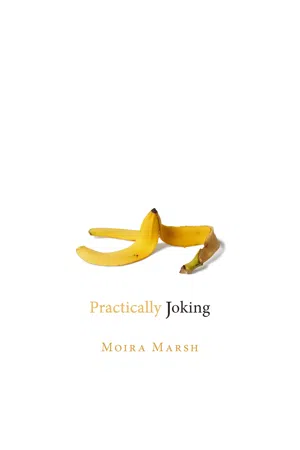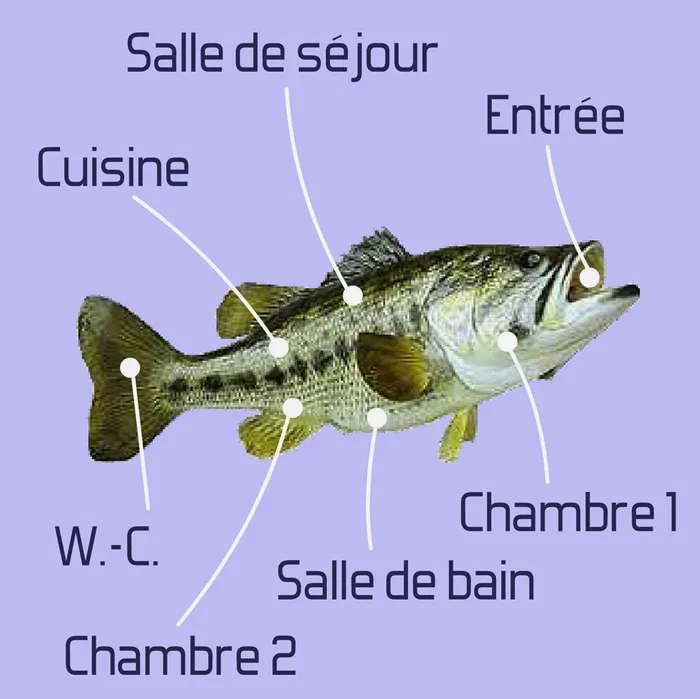1
What’s Practical about Practical Jokes?
It’s surprisingly hard to define “practical joke” or its synonym, “prank.” It is also difficult to explain what is “practical” about these expressive forms. A good definition must account for a wide variety of pranks and practical jokes, from the simple to the elaborate, from the benign to the malicious. Practical jokes may be personal or anonymous, private or public. Some are tailored for specific individuals and enacted just once while others have been repeated so often that they may be recognized by name, such as the short-sheeted bed, the snipe hunt, or “Going to see the Widow” (Cohen 1951; Grotegut 1955; Stahl and Kirby 1958). For many people, “practical joke” and “prank” conjure up the use of novelties and gag items. “The list is extensive: fake insects, vomit, and animal feces; dribble cups and spoons; foaming sugar; disappearing binoculars; soap and rubber crackers, nuts, eggs, gum, chocolates, and pretzels; dirty and bloody soap; crazy pitch baseballs; useless hinged scissors; exploding pens, cigars, cigarettes, cigarette cases; sneezing and itching powder” (Erard 1991, 1). Yet, while some practical jokes rely on elaborate props and scenery, others are equally effective using no extraverbal means at all. Some pranks involve mess and physical discomfiture of the target while others are more cerebral; some involve extended action sequences, but others can be accomplished in an armchair.
All these activities are playful performances involving the interaction of two parties—trickster and dupe—who have mutually incompatible ideas about what is going on. The involvement of dupes seems to be an essential characteristic of the genre. The role of the dupe is relatively passive: the trickster acts and initiates while the dupe is acted upon.
Dupes play an important role in this genre, as reflected in the abundance of vernacular terms to label them. There are relatively few terms in English for the perpetrators, trickster and joker being the most common. On the other side is the victim, fool, dupe, or butt (from the French for “target”).1 With the possible exception of victim, the names for practical joke dupes are always derogatory. Many traditional metaphorical terms compare them to animals, birds, or fish. In German, an April fool might be an Aprilochse (April ox) or Aprilesel (April donkey), to give just two possibilities (Wolf-Beranek 1968). The insulting reference to donkeys works in English, too, as witness the English April Fools’ Day hoax from 1864 when a London newspaper, the Evening Star, announced “a grand exhibition of donkeys” for the following day at the Agricultural Hall. “Early on the morning of April 1st, a large crowd assembled outside the doors of the hall only to discover that they themselves were the donkeys” (quoted in Wight 1927, 40).
Bird metaphors are common in the language of practical joking. In Scotland, the April fool is a gowk, that is, a cuckoo, and a traditional practical joke called “hunting the gowk” sends its target from one person to the next in a vain search for an object that does not exist. In general, a naïve or gullible person is sometimes termed a pigeon, and the word dupe itself derives from the Latin upupa (the hoopoe, a bird renowned for its stupidity). May gosling is an older English label for the victim of a May Day trick (compare the German Aprilgans [April goose]) (Opie and Opie 1959, 256–257). The comparison of dupes to birdbrains probably lies behind the verb gull, meaning to cheat or fool someone (that is, to make a gull of them), from which we get the more common word gullible.2
Fish are commonly represented in the language used to refer to those taken in by practical jokes. In France, Belgium, and Italy, the April fool is an “April fish” (poisson d’avril or pesce d’aprile); fish motifs predominate in tricks played on this date and appear on a wide variety of greeting cards. Over the centuries several theories have been put forward to explain why fish should be the symbol of April Fools’ Day (Dundes 1989), but none observe that the fish theme is also common in the broader vocabulary of practical joking. As fish are caught because they are fooled into swallowing bait, so we speak of a credulous person “swallowing” a false story or falling for it “hook, line, and sinker.” In Ireland, codding is the current term for playing practical jokes (Harlow 1997). The term catch, used for a variety of deceptive routines favored by American children and youth, is another manifestation of the fish metaphor (Roemer 1977).
I talk about targets rather than victims of practical jokes because the latter term prejudges the outcome of the trickery. The vernacular terminology for the participants in practical joking puts the perpetrators in the active, superior position, but in taking aim at a target it is always possible to miss. While not as derogatory as some of the other terms, victim still imputes a passive role to the target of a practical joke, but targets can and do turn the tables on tricksters. Further, victim prejudges the propriety and humorousness of the genre, whereas debates and negotiations over these questions are at the heart of practically joking.
Riddle jokes and narrative jokes also have targets—blonds, Polacks, JAPs, and many others. However, while the targets of verbal jokes are arguably fictional characters rather than sociological facts (Davies 2011; Oring 2003, 58–70), there can be no doubt that practical jokes, like teases and jocular insults, take aim at real people. No practical joke can exist without a specific, live target or targets.
What makes a target is containment: instead of witnessing a joke or a play activity, the target is unilaterally enclosed in it. Performance and play are framed representations or transformations of reality, but the practical joke requires that one party be unaware of these frames. Because of this lack of awareness, the targets are themselves contained in the performance. Containment and differential framing are what distinguish practical jokes from other jokes, making them both peculiar kinds of performance and peculiar kinds of play. As performance, practical jokes feature protagonists who are acting while not acting. Whereas play is usually thought to be voluntary, practical jokes are unilateral play forms that attempt to compel their targets into play through surprise or trickery.
Narrative and riddle jokes readily lend themselves to frequent decontextualization and recontextualization (Bauman and Briggs 1990) and so spread far and wide; for this reason they are sometimes called “canned” or “prepared” jokes, both terms that underplay the variation and individual creativity that characterize live performance. In contrast, most jocular speech (joking as contrasted to joke telling) is spontaneous, closely tied to its context of origin, and not often repeated. Practical jokes fall somewhere between these two poles of contextualizaton. A spontaneous practical joke is conceivable but relatively rare; most are planned and scripted in advance. Commonly, this planning and anticipation are half the fun for the jokers. Some pranks are generic, replayed in new settings from tradition, experience, or instructions found in books or on websites. Others are unique, being tailored to the habits, personality, and personal proclivities of specific targets. As with most forms of folklore, however, even the oldest generic pranks offer room for individual variation and style when they are performed.
Many practical jokes appear to exist in imagination only. These have been called practical joke recipes: instructions for how to carry out a fabrication (Morrison 1974). Would-be pranksters can find these blueprints by the dozen in popular books (Jillette and Teller 1989), for example, and on websites like April Fool Zone (AmazingFX.net and Regan 2008). Here’s an example from a New Zealand online bulletin board with a suggestion for how to liven up a party:
Without more investigation of the readership of these websites and instruction books, it is unclear how often any of these recipes are ever enacted. Quite possibly, readers have fun simply imagining the possibilities without going to the trouble of sneaking a live chicken into a party, let alone taking the risk of startling fellow partygoers.
What is significant for my purposes is that practical joke recipes contain not only step-by-step instructions for the trickster (First, take your chicken . . .) but also descriptions of what is supposed to happen next. Frequently they contain what is essentially a script for how the targets will behave (open the door, try the light, cross the room in the dark, and open the lid). The suggestion is that if the jokers carry out their part properly...

